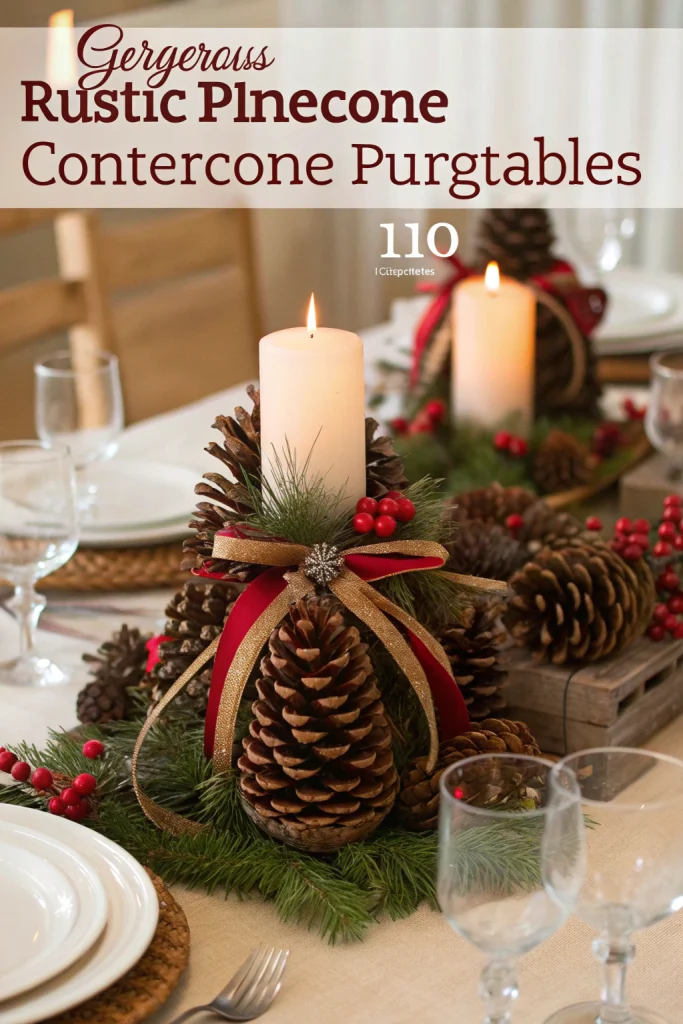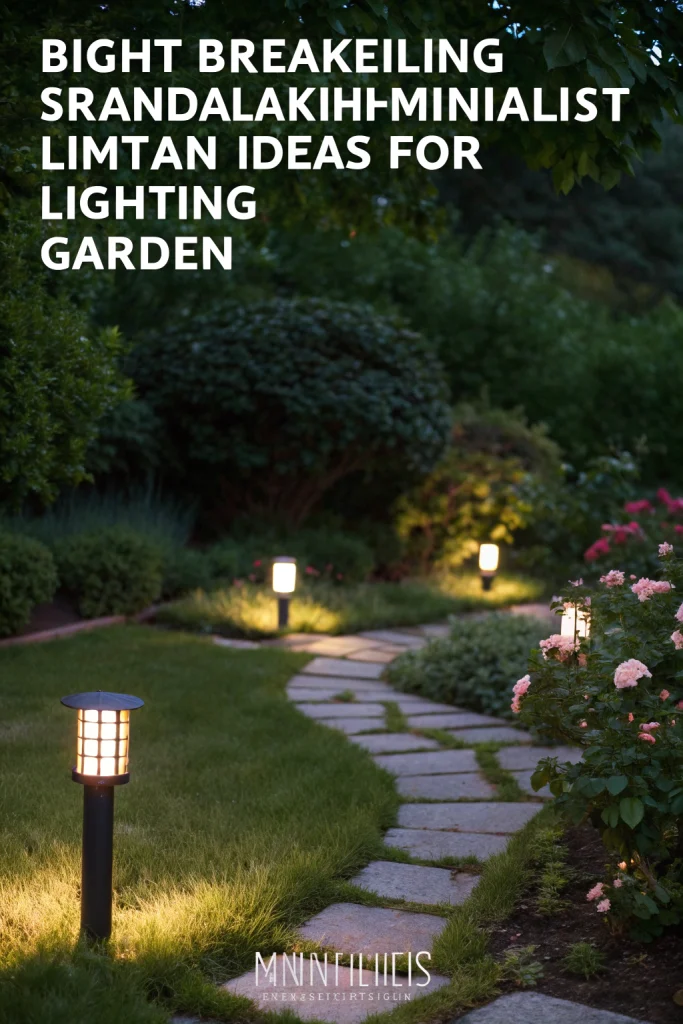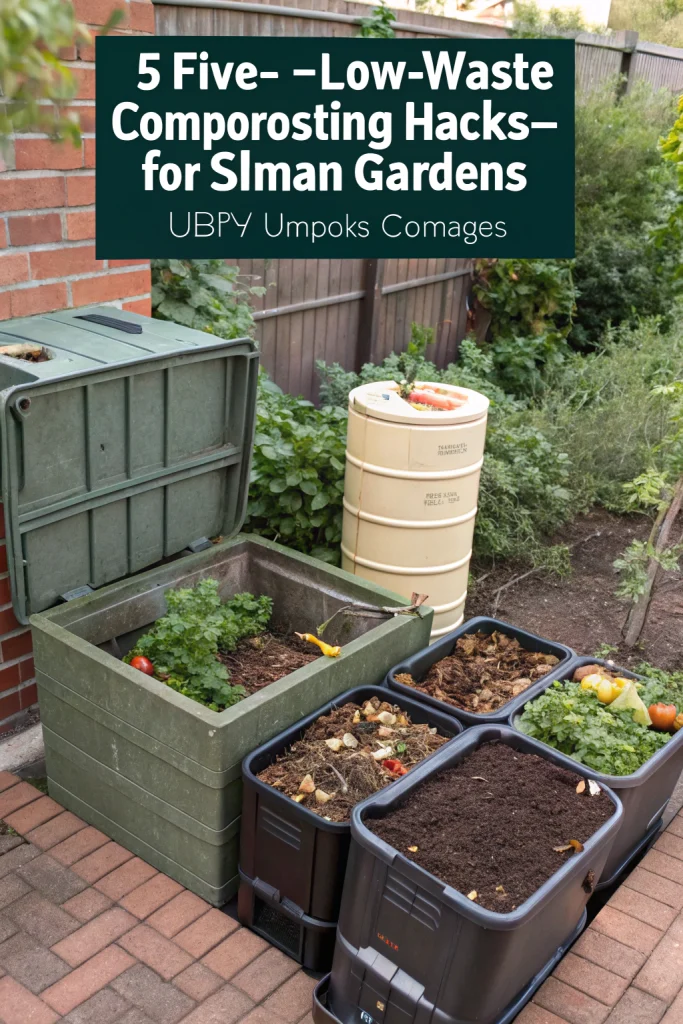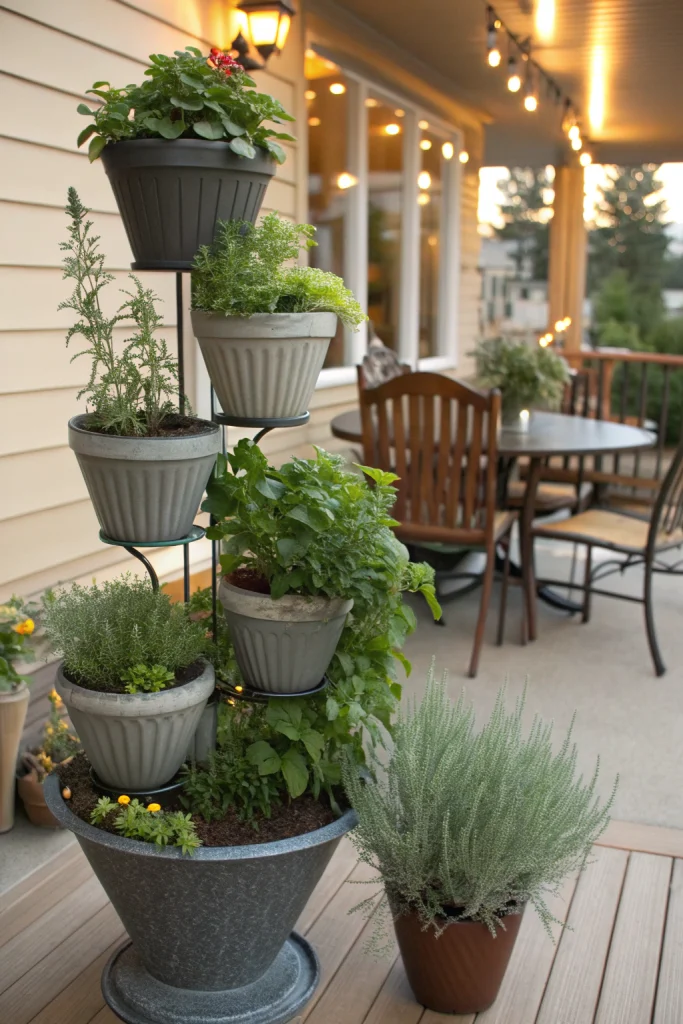- Generate a relevant, 8-14-word H2 subtitle for the article.
- Integrate the focus keyword "Winter, Herbal, Planters, for" naturally throughout the text at a density of 1-2 times per 100 words.
- Ensure the article is comprehensive, informative, and provides actionable advice.
- Include a variety of headings (H2, H3), bullet points, and numbered lists.
- Include oneand onewith relevant content.
- Include one relevant
tag with an appropriate alt attribute containing the focus keyword.
- Include 3-5 external links and 3-5 internal links at the end of the article, presented in unordered lists. All external links must have
target="_blank"andrel="dofollow"attributes. All internal links must havetarget="_blank"attributes. Replaceexample.comwith relevant, diverse, and real domain names for external links. For internal links, usenouvelles-technologie.comfollowed by relevant, plausible slugs.- Ensure all links are relevant to the article's topic.
- Maintain a friendly, informative, and authoritative tone.
- Avoid keyword stuffing while ensuring natural integration.
- Break up long paragraphs to improve readability.
- Use transition words and phrases to ensure smooth flow between sections.
- Conclude with a strong summary and a small FAQ section.
- Ensure the article is 100% unique and does not reproduce any existing content.
- Write in a natural, engaging style that resonates with gardeners seeking sustainable solutions.
- Focus on practical, actionable advice for winter herbal planters.
- Double-check for grammatical errors, typos, and awkward phrasing.
- Make sure the article fulfills all the implicit and explicit requirements.
- The article should be divided into logical sections, leveraging
<h2>and<h3>tags for structure."Table of Contents
ToggleWinter, Herbal, Planters, for — Cultivating Sustainable Gardens Through the Cold Season
Winter, Herbal, Planters, for blends practical, low-cost techniques with real environmental impact. Use these eco-first methods to reduce waste, save water, build living soil, and support pollinators—all while keeping your garden beautiful and productive through the cold season.
[lwptoc]
Why Winter, Herbal, Planters, for Matters This Season
Winter prep is when smart gardeners get ahead: leaves become mulch, rain becomes irrigation, and “waste” becomes soil food. With Winter, Herbal, Planters, for, you set resilient foundations now—so spring growth is faster, healthier, and cheaper.
Tip: Audit what you already have—fallen leaves, cardboard, prunings, and kitchen scraps are free, powerful inputs that supercharge soil life.Core Materials & Tools for Winter Herbal Planters
To successfully implement the principles of Winter, Herbal, Planters, for, having the right materials and tools is crucial. Many of these items are readily available, often for free, and contribute directly to a sustainable gardening practice. Thinking ahead at the end of autumn can save you considerable time and money in the long run.
- Dry leaves, shredded cardboard, twig cuttings (mulch & sheet-mulch layers for warmth and soil building)
- Compost setup (bin, bokashi, or worm tower for processing kitchen and garden waste into rich soil amendments, perfect for herbal planters)
- Rain barrel with downspout diverter; watering can or soaker hose (essential for water conservation, especially important for sustaining Winter, Herbal, Planters, for when tap water might be cold)
- Reusable pots (terracotta/metal/wood—materials that offer insulation and durability for winter conditions) and sturdy seed trays (for starting hardy herbs indoors)
- Hand tools (stainless trowel, pruners, rake—basic, durable tools that last many seasons) and a simple sieve (for refining compost or leaf mould for delicate seedlings)
- Garden sheeting or old blankets (for temporary frost protection for your Winter, Herbal, Planters, for)
- Natural pest deterrents like diatomaceous earth or neem oil (used sparingly and only when necessary)
- Gloves and appropriate winter gardening attire to comfortably work with your Winter, Herbal, Planters, for
Investing in quality, durable tools reduces waste from frequent replacements. Likewise, choosing reusable planters over single-use plastic contributes significantly to the environmental goals of Winter, Herbal, Planters, for. Think of these items not just as purchases, but as investments in the long-term health and productivity of your garden and the planet.
FAQ — Eco swaps: Replace peat with leaf mould; trade synthetic fertilizer for compost tea; use solar/LED path lights; pick native plants for pollinators.Step-by-Step Method for Thriving Winter, Herbal, Planters, for
Step 1 — Build a No-Dig Base with Leaves
The foundation of successful Winter, Herbal, Planters, for, especially for in-ground beds or large raised planters, is a no-dig approach. This method drastically improves soil health, reduces manual labor, and mimics natural forest floor processes.
Lay cardboard on bare soil, overlapping edges by 10–15 cm to prevent weeds from peeking through. Wet the cardboard lightly to help it settle and begin decomposition. On top of this, add a generous layer of 5–10 cm of shredded leaves. Leaves are a goldmine for soil health, providing a slow-release source of nutrients and fostering a thriving microbial ecosystem. Finally, add a thin layer of finished compost. This sandwich of materials suppresses weeds, conserves moisture by acting as a natural sponge, and jumpstarts the fungal networks that are essential for nutrient cycling, preparing the bed for abundant spring growth and robust Winter, Herbal, Planters, for.
For individual planters, especially smaller ones, this no-dig concept can be adapted: place a layer of shredded paper or cardboard at the bottom, then a mix of leaves and compost before adding your planting medium. This provides drainage, retains moisture, and introduces slow-release nutrients, making your herbal planters more self-sufficient and resilient during winter.
Step 2 — Capture Rain & Water Smarter for Your Herbal Planters
Water is a precious resource, and efficient management is a cornerstone of Winter, Herbal, Planters, for. Winter doesn’t mean an end to watering needs, especially for herbs in planters which can dry out even in cold, windy conditions.
Install a rain barrel and connect it to a downspout. Collecting rainwater provides a chemical-free, room-temperature water source that’s much better for plants than cold tap water. Water your plants early in the day, especially during cooler periods, to allow foliage to dry before evening, reducing the risk of fungal diseases. Group pots with similar water needs together; this creates microclimates that reduce evaporation and makes watering more efficient. Mulch containers with a layer of leaves or shredded bark. This insulates the soil from temperature fluctuations and drastically reduces evaporation. Adding saucers with a layer of gravel beneath your planters can also help reduce water loss and provide passive humidity, while ensuring good drainage. For larger Winter, Herbal, Planters, for or raised beds, consider using a soaker hose system connected to your rain barrel, which delivers water directly to the root zone with minimal waste.
Regularly check the moisture levels in your winter herbal planters by sticking your finger an inch or two into the soil. Even in winter, wind and dry air can dessicate plants, so smart watering remains a vital task for your Winter, Herbal, Planters, for.
Step 3 — Feed Soil Life Naturally for Winter, Herbal, Planters, for
Healthy soil is living soil, teeming with microorganisms that break down organic matter and make nutrients available to plants. The principles of Winter, Herbal, Planters, for emphasize nurturing this subterranean ecosystem.
Start a cold compost system for fallen leaves and other carbon-rich materials. You can also add coffee grounds and tea leaves from indoor use. For smaller spaces or faster decomposition for your winter herbal planters, consider bokashi or a worm tower for kitchen scraps. Bokashi ferments scraps, while worm composting turns them into nutrient-rich vermicast. Once ready, trench your compost or vermicast into resting garden beds or mix small amounts into your Winter, Herbal, Planters, for. This approach enriches the soil structure, boosting its water retention and fertility naturally.
Sieve last year’s leaf mould – decomposed leaves – to craft a silky, nutrient-rich seed starting mix for early sowings. Leaf mould is exceptionally good for germinating seeds and nurturing young plants, offering a light, airy structure and gentle nutrients without the need for additional fertilizers. This practice reduces the need to purchase external soil amendments and recycles garden waste into a valuable resource, perfectly aligning with the sustainable ethos of cultivating Winter, Herbal, Planters, for.
Step 4 — Balance Pests with Habitat in Your Winter, Herbal, Planters, for
Rather than seeking to eradicate all “pests,” Winter, Herbal, Planters, for focuses on creating a balanced ecosystem where natural predators can thrive and keep undesirable populations in check. This approach minimizes the need for chemical interventions, which can harm beneficial insects and pollinators.
Keep select seed heads on plants in your garden or larger herbal planters through winter. These provide a valuable food source for winter birds, which in turn can help control insect populations. Bundle hollow stems, twigs, and leaves into a designated “habitat corner” or bug hotel. This provides shelter for beneficial insects like ladybugs, lacewings, and solitary bees during the colder months. These allies will emerge in spring to help protect your herbal planters from common pests.
If pest issues arise in your Winter, Herbal, Planters, for, first try non-chemical approaches. A strong jet of water can dislodge aphids, or a mild soap solution (like insecticidal soap) can be used. Neem oil or garlic sprays are natural alternatives, but use them sparingly and only when necessary, as even natural sprays can impact beneficial insects if overused. Companion planting, where specific herbs or flowers are planted together to deter pests or attract beneficials, is another excellent preventative strategy for your Winter, Herbal, Planters, for. For example, marigolds are known to deter nematodes, and dill attracts beneficial wasps.
Environmental & Cost Impact of Winter, Herbal, Planters, for
The beauty of the Winter, Herbal, Planters, for approach lies not just in its effectiveness but also in its profound positive environmental and economic impact. By adopting these methods, gardeners can make a significant difference on both a local and global scale.
Environmentally, implementing Winter, Herbal, Planters, for practices allows you to divert many bags of leaves, grass clippings, and kitchen scraps from landfills. This dramatically reduces methane gas emissions, a potent greenhouse gas, and also saves on municipal waste processing costs. The use of mulch and captured rainwater significantly cuts down on overall irrigation needs, saving precious freshwater resources. Furthermore, by fostering biodiversity through habitat zones and natural pest control, you directly support local ecosystems, providing refuge and food for pollinators, birds, and beneficial insects. This holistic view of gardening contributes to a healthier planet by restoring ecological balance.
From a cost perspective, the benefits are equally compelling. Reducing reliance on purchased soil amendments like peat moss and synthetic fertilizers, which can be expensive, is a major saving. Homemade compost and leaf mould are free, high-quality alternatives that improve soil health better than artificial products. Collecting rainwater means lower water bills, especially during dry spells. By creating a resilient garden that can withstand winter conditions and naturally resist pests, you reduce the need for costly replacements of plants and expensive chemical treatments. In essence, Winter, Herbal, Planters, for transforms garden “waste” into valuable resources, turning expenses into savings and making sustainable gardening accessible to everyone.
Advanced Eco Hacks for Your Winter Herbal Planters
For those looking to deepen their sustainable gardening practices, these advanced eco hacks offer further ways to enhance your Winter, Herbal, Planters, for systems.
- Biochar Integration: Biochar is a stable form of carbon produced from biomass through pyrolysis. It has an incredible ability to hold water and nutrients in the soil. Charge homemade biochar (made from garden trimmings) by soaking it in compost tea or worm castings leachate before mixing it into your beds or herbal planters. This infuses it with beneficial microbes and nutrients, making it a powerful long-term soil amendment for your Winter, Herbal, Planters, for.
- Soil Blocks instead of Plastic Trays: Eliminate plastic waste entirely when starting seeds by using soil blocks. These are self-contained cubes of growing medium formed using a special tool. They reduce transplant shock and allow for healthier root development, making them ideal for propagating herbs for your Winter, Herbal, Planters, for.
- Milk Jug Winter Sowing: This ingenious method uses repurposed clear plastic milk jugs as mini-greenhouses. Cut the jug almost in half, fill the bottom with potting mix, sow hardy perennial herb seeds or cool-season salad greens, tape it back up, and place it outside. The jug protects the seeds from harsh winter elements while allowing natural freeze-thaw cycles and temperature fluctuations to stratify seeds and encourage germination at the right time in spring, perfect for self-sufficient Winter, Herbal, Planters, for.
- Insulate Patio Pots with Cardboard Jackets and Leaf Fill: For outdoor herbal planters, particularly those exposed to severe cold, preventing root freeze is paramount. Create insulating jackets for your patio pots using thick cardboard, securing it with twine or tape. Fill the gap between the pot and the cardboard with fallen leaves, straw, or shredded newspaper. This creates a thermal barrier, protecting roots from freezing and thawing cycles that can damage plants. This simple hack is crucial for the survival of delicate herbs in your Winter, Herbal, Planters, for through harsh winters.
- DIY Vermicomposting for Container Gardens: If you have limited space, a small indoor worm bin is an excellent way to turn kitchen scraps into nutrient-rich vermicompost. This “black gold” can then be directly added to your Winter, Herbal, Planters, for, providing a continuous supply of organic fertilizer, stimulating microbial life, and improving soil structure.
- Seed Saving and Exchange: Save seeds from your favorite open-pollinated herbs. Not only does this save money, but it also allows you to select for plants that are best adapted to your specific garden microclimate. Participate in seed exchanges to diversify your collection and share knowledge with other gardeners who are also passionate about Winter, Herbal, Planters, for.
Design & Aesthetics (Keep It Beautiful) for Your Winter Herbal Planters
Sustainability doesn’t mean sacrificing beauty. In fact, the principles of Winter, Herbal, Planters, for can enhance the aesthetic appeal of your outdoor spaces, creating a garden that is both eco-conscious and visually striking, even in the colder months.
Blend sustainability with style by incorporating recycled materials into your garden design. Use salvaged wood for planter edges or to create raised beds. The natural patina of reclaimed materials adds character and a sense of history. Embrace the beauty of aging materials – mossy terracotta planters or weathered metal accents can evoke a cozy, Nordic feel, perfectly complementing the subdued tones of a winter garden. Arrange your Winter, Herbal, Planters, for thoughtfully, considering varying heights and textures to create visual interest.
Warm solar path lighting can transform your winter garden into a magical, inviting space in the evenings, highlighting key features or illuminating paths to your herbal planters without consuming electricity. Choose a restrained color palette, focusing on the greens of hardy herbs, the browns and grays of natural materials, and perhaps splashes of color from winter berries or frost-tolerant flowers. Repeat textures, such as the feathery fronds of certain herbs against the rough bark of a log, to create cohesion and a contemplative atmosphere. Even dormant beds covered in a thick layer of leaf mulch can look purposeful and neat with well-defined edges. Think of your garden as a living tableau where every element, including your Winter, Herbal, Planters, for, contributes to both its ecological function and its visual charm.
Common Mistakes to Avoid with Winter, Herbal, Planters, for
Even with the best intentions, it’s easy to fall into common gardening traps that can undermine your sustainable efforts. Being aware of these pitfalls will help you maintain a thriving and eco-friendly system for your Winter, Herbal, Planters, for.
- Using peat moss: Peat harvesting is environmentally destructive, leading to the destruction of vital carbon-sequestering peat bogs. It is not a sustainable resource. Instead, choose leaf mould, homemade compost, or coir (coconut fiber) as renewable alternatives. These options are just as effective, often superior, and support the goals of Winter, Herbal, Planters, for.
- Over-tidying: While a neat garden might appeal to some, a hyper-tidy approach often removes crucial habitat for beneficial insects and overwintering pollinators. While it’s important to remove diseased plant material and potential hazards, leave some spent perennial stalks, seed heads, and undisturbed leaf litter in designated areas. These provide essential shelter and food sources for your garden allies, which are vital for pest control and pollination come spring. Think of these “messy” spots as vital ecological hubs for your Winter, Herbal, Planters, for.
- Watering at midday: Watering during the hottest part of the day, even in winter if there’s a warm spell, leads to significant evaporation losses. The water never reaches the roots efficiently. Always water early in the morning or late in the evening. This minimizes evaporation, allows plants time to absorb water, and reduces the risk of fungal diseases by allowing foliage to dry before nightfall. This is particularly important for Winter, Herbal, Planters, for where water can sit on leaves in colder temperatures.
- Heavy fertilizing in cold soils: Plants’ metabolic activity slows down significantly in cold temperatures. Applying strong chemical fertilizers when the soil is cold can lead to nutrient runoff and can harm the delicate microbial life you’ve worked so hard to cultivate. Instead, focus on feeding the soil with organic matter like compost and leaf mould. These materials break down slowly, releasing nutrients as the soil warms up and plants become more active. They also actively feed the beneficial microbes that are the true engines of a healthy garden system, especially for your Winter, Herbal, Planters, for.
- Ignoring microclimates: Not all parts of your garden experience the same conditions. Some areas might be sheltered and warmer, others exposed to harsh winds. Pay attention to these microclimates and group plants (especially sensitive herbs in your Winter, Herbal, Planters, for) according to their needs. Providing windbreaks or temporary covers for more vulnerable plants can make a huge difference.
- Giving up too early on cold-hardy herbs: Many herbs are surprisingly resilient. Don’t assume all herbs will die back in winter. With proper mulching and protection, varieties like sage, thyme, oregano, and even some mints can survive and provide fresh leaves even through cold spells, making your Winter, Herbal, Planters, for productive all year.
Storage & Winter Care for Your Winter Herbal Planters and Tools
Proper winter care extends beyond the growing plants; it includes preparing your equipment and resources for the colder months. This ensures longevity, efficiency, and readiness for the next growing season, all integral to the philosophy of Winter, Herbal, Planters, for.
Protect Rain Barrels: If your rain barrel is not designed to withstand freezing, it’s crucial to drain it completely before the first hard freeze. Disconnect it from the downspout and turn it upside down or cover it securely to prevent water from accumulating. This prevents ice expansion from cracking the barrel. If it’s frost-proof, ensure its lid is secure to keep out debris. This proactive step ensures your vital water capture system for your Winter, Herbal, Planters, for is ready in spring.
Aerate Compost: Continue to aerate your compost pile periodically, even in winter, though decomposition will slow down. Turning the pile helps introduce oxygen, which is essential for aerobic bacteria that break down organic matter. A well-aerated pile is less likely to become anaerobic and smelly. For smaller or cold compost bins, a good stir every few weeks is sufficient. This prepares a rich supply of compost for your Winter, Herbal, Planters, for when spring arrives.
Organize Leaf-Mould Pens: If you have designated areas or bins for making leaf mould, label them by the date you started them. Leaf mould can take 1-2 years to fully mature. Knowing the age of your batches allows you to access the most decomposed material for seed starting or immediate soil amendment for your Winter, Herbal, Planters, for, while younger batches continue their transformation.
Clean and Oil Tools: Before storing for the winter, thoroughly clean all your garden tools. Remove any soil, sap, or rust. Sharpen blades on pruners and shovels. Apply a light coat of oil (linseed oil works well for wooden handles, and a general-purpose oil for metal parts) to prevent rust and keep mechanisms moving smoothly. Store tools in a dry, protected area. Well-maintained tools last longer, perform better, and are a core component of sustainable gardening for your Winter, Herbal, Planters, for.
Store Dry Cardboard Flat: Keep a stash of dry, flattened cardboard in a protected area. This seemingly simple step provides a readily available resource for quick sheet-mulch builds (as described in Step 1) as new garden beds become free or whenever you want to expand your no-dig areas around your Winter, Herbal, Planters, for. It’s also invaluable for suppressing weeds or creating temporary pathways.
Empty and Clean Planters: If you have empty planters, clean them thoroughly. Remove any remaining soil and debris. If they housed diseased plants, sterilize them with a dilute bleach solution to prevent disease carryover. Store them upside down to prevent water accumulation and potential freezing damage. This foresight ensures your planters are clean and ready for new planting endeavors with your Winter, Herbal, Planters, for come spring.
Conclusion
Winter, Herbal, Planters, for proves greener gardening is easier, cheaper, and more resilient. By embracing the principles outlined—starting with transforming fallen leaves into rich mulch, capturing and conserving precious rainwater, nurturing the unseen life in your soil, and thoughtfully creating habitats for beneficial creatures—you lay the groundwork for a truly thriving garden. These simple, eco-conscious steps reduce waste, minimize external inputs, and build a robust ecosystem that supports itself. Your spring garden, tended with the wisdom of Winter, Herbal, Planters, for, will repay you with unparalleled vigor, abundant harvests of fresh herbs, and a profound sense of satisfaction, all while demanding fewer resources and providing a healthier space for both you and native wildlife. Embrace the cold season as an opportunity to build a stronger, more sustainable garden. The rewards will be tangible, beautiful, and enduring.
FAQ
- Can I start now? Yes—focus on leaves, rain capture, no-dig prep, and tool care. Even small steps make a big difference in implementing Winter, Herbal, Planters, for.
- Only a balcony? Use worm towers/bokashi in planters and insulate pots with cardboard + leaves. Many herbs thrive in containers, making Winter, Herbal, Planters, for highly adaptable to small spaces.
- Special tools required? No—a rake, pruners, and a basic bin (or bags) are enough. The beauty of Winter, Herbal, Planters, for is its accessibility.
- Science behind this? Yes, the methods are rooted in ecological principles of soil science, hydrology, and entomology. See resources below for more.
- What herbs are best for winter planters? Hardy herbs like sage, thyme, oregano, chives, mint, and parsley can often survive winter in planters, especially with protection. Rosemary may need to come indoors in very cold climates. Choose varieties labeled as “cold-hardy” for best results in your Winter, Herbal, Planters, for.
- How do I prevent my planters from freezing solid? Insulate them with cardboard, leaves, or straw. Group them together against a warm building wall. For very sensitive plants, consider bringing them into an unheated garage or greenhouse. Ensure good drainage to prevent waterlogging, which can lead to root rot and freezing damage in your Winter, Herbal, Planters, for.
- Healthline — Growing food in limited space for your herbal planters
- Harvard T.H. Chan — Plate & Planet (sustainability in gardening)
- Medical News Today — Health benefits of gardening with Winter, Herbal, Planters, for
- The Nature Conservancy — Gardening for Bees and Pollinators
- Rodale Institute — Composting 101 for Sustainable Gardens
- 7 Gardening Hacks That Work in 2025 for Winter, Herbal, Planters, for
- DIY Cold Frame Build for Protecting Your Herbal Planters
- Biodiversity-Friendly Fall Garden Tips for Winter Prep
- Sustainable Urban Gardening Techniques for Small Spaces
- The Long-Term Benefits of No-Dig Gardening Applications
 Post Views: 13
Post Views: 13 - Include one relevant
more posts:

10 Gorgeous Rustic Pinecone Centerpiece Ideas for Holiday Tables

8 Breathtaking Scandinavian Minimalist Lighting Ideas for Gardens


